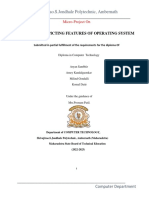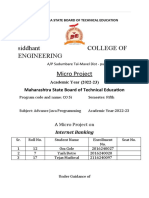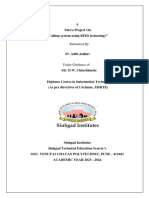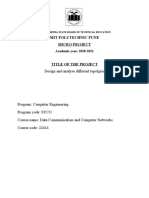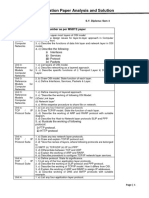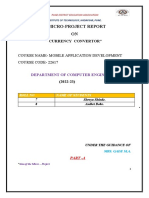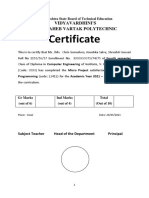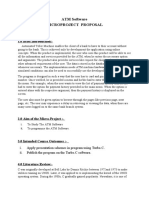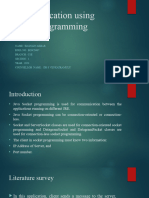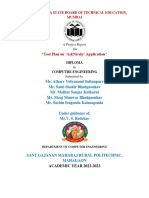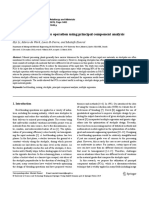0% found this document useful (0 votes)
155 views12 pagesDCC Microproject
This document is a project report on installing a peer-to-peer network. It discusses the history and requirements of computer networks. It explains what a peer-to-peer network is and how it differs from a client-based network. The proposed methodology is to install a peer-to-peer network connection. The resources used include computers, operating systems, and team members. The topology chosen for the peer-to-peer network is a mesh topology.
Uploaded by
Lala BhauCopyright
© © All Rights Reserved
We take content rights seriously. If you suspect this is your content, claim it here.
Available Formats
Download as PDF, TXT or read online on Scribd
0% found this document useful (0 votes)
155 views12 pagesDCC Microproject
This document is a project report on installing a peer-to-peer network. It discusses the history and requirements of computer networks. It explains what a peer-to-peer network is and how it differs from a client-based network. The proposed methodology is to install a peer-to-peer network connection. The resources used include computers, operating systems, and team members. The topology chosen for the peer-to-peer network is a mesh topology.
Uploaded by
Lala BhauCopyright
© © All Rights Reserved
We take content rights seriously. If you suspect this is your content, claim it here.
Available Formats
Download as PDF, TXT or read online on Scribd
/ 12











